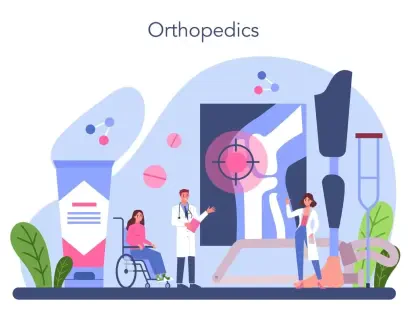Setting the Stage for Healthcare Innovation
Imagine a healthcare system where clinicians spend less time on paperwork and more on patient care, where virtual consultations are as seamless as in-person visits, and where patient identities are secured with cutting-edge technology. This vision is becoming a reality through Epic Toolbox, a platform enhancing Epic’s electronic health record (EHR) system with powerful digital integrations. As healthcare faces mounting challenges like clinician burnout and operational inefficiencies, these integrations offer a lifeline by streamlining workflows and improving patient outcomes. This review dives into the transformative potential of Epic Toolbox’s partnerships with leading tech firms, examining how they address critical needs in the industry.
The scope of this analysis covers key integrations with companies such as Ambience Healthcare, Caregility, Five9, Imprivata, and NESA. Each brings a unique solution to the table, from AI-driven documentation to virtual care platforms, all embedded within Epic’s ecosystem. By exploring their features, performance, and real-world impact, this evaluation aims to provide a clear picture of how these tools are shaping modern healthcare delivery.
In-Depth Analysis of Epic Toolbox Integrations
Core Purpose and Relevance in Healthcare Technology
Epic Toolbox serves as a pivotal platform that extends the capabilities of Epic’s EHR system by integrating third-party digital health solutions. Its primary goal is to enhance patient care through improved interoperability, ensuring that disparate systems work cohesively to support clinical and administrative tasks. By embedding advanced tools directly into familiar workflows, the platform minimizes disruption and maximizes efficiency for healthcare providers.
The significance of Epic Toolbox lies in its user-centric design, which prioritizes the needs of clinicians and patients alike. In an era where healthcare technology is rapidly evolving, this platform stands out by fostering seamless data exchange and reducing the friction often associated with adopting new systems. Its role in promoting operational efficiency cannot be overstated, as it tackles longstanding issues like redundant data entry and fragmented communication channels.
This integration ecosystem also reflects broader industry trends toward value-based care, where outcomes and patient satisfaction take precedence over volume. By providing a standardized framework for third-party innovations, Epic Toolbox ensures that healthcare organizations can adapt to changing demands without overhauling their existing infrastructure, positioning it as a cornerstone of digital transformation.
Key Features of Partner Integrations
Ambience Healthcare: Revolutionizing Documentation with AI
Ambience Healthcare’s integration with Epic’s Ambient Module and Haiku introduces AI-powered documentation that redefines clinical efficiency. This tool leverages contextual intelligence to assist with visit documentation, automatically generating notes and suggesting ICD-10 codes for billing accuracy. Such capabilities significantly reduce the administrative burden on clinicians, allowing more time for direct patient interaction.
Beyond easing workload, this solution addresses clinician burnout—a pervasive issue in healthcare. By automating repetitive tasks and minimizing errors in coding, it ensures that medical records are both precise and comprehensive. The impact on financial operations is equally notable, as accurate documentation translates to fewer claim denials and improved revenue cycles.
Caregility: Enabling Virtual Workflows with Connected Care™
Caregility’s Connected Care™ platform brings inpatient virtual workflows to life within Epic’s ecosystem, supporting virtual nursing and family engagement. Its AI-driven features, such as Augmented Observation for patient safety and Contactless Vitals for remote monitoring, enhance the ability to oversee patients without physical presence. This is particularly valuable in settings where staff shortages are a concern.
The platform’s design facilitates meaningful connections between patients and their families, even across distances, fostering a sense of support and involvement. Additionally, by reducing the need for constant in-person checks, it allows clinicians to allocate their time more effectively, focusing on critical care needs while maintaining high safety standards through technology.
Five9: Streamlining Patient Communication
Five9’s Fusion for Epic Contact Center integrates advanced contact center capabilities directly into the EHR system, providing agents with instant patient context and one-click outbound calling. This eliminates the need to toggle between multiple systems, drastically cutting down on administrative delays during patient interactions. The result is a smoother communication process that benefits both staff and patients.
Efficiency gains from this integration extend to improved appointment scheduling, follow-up calls, and issue resolution, all handled from a single interface. For healthcare organizations, this means reduced operational costs and a more responsive patient service model, ultimately enhancing satisfaction and trust in the care process.
ImprivatSecuring Patient Identity with Biometrics
Imprivata Patient Access automates patient identity verification for MyChart accounts using facial recognition technology, addressing the critical issue of misidentification. By ensuring that the right patient is linked to the correct records, it minimizes errors that can lead to claim denials or duplicate entries, which are costly in terms of both time and resources.
This integration also bolsters security across the healthcare enterprise by implementing high-assurance identity management. The operational return on investment is evident as staff spend less time on manual verification processes, allowing them to focus on delivering care while maintaining compliance with privacy standards.
NESPioneering Inpatient Virtual Care
NESA’s Virtual Care Platform™ stands as a trailblazer in inpatient virtual care, fully embedded within Epic applications like Hyperspace and MyChart. Its AI-enabled two-way audio and video capabilities cater to diverse patient groups, ensuring accessibility regardless of age or technical proficiency. This makes virtual consultations a viable option for a wide range of care scenarios.
The platform’s seamless integration means clinicians can initiate virtual sessions without leaving their primary workflow, enhancing adoption rates among busy professionals. For patients, it offers a convenient way to receive care without the need for physical travel, breaking down barriers to access and personalizing the healthcare experience.
Performance and Real-World Impact
The performance of these integrations shines through in various healthcare settings, where they deliver measurable improvements in clinical and operational outcomes. For instance, virtual care solutions from NESA and Caregility have enabled hospitals to manage patient loads more effectively, especially in understaffed regions, by facilitating remote consultations and monitoring.
Streamlined communication via Five9 has transformed patient engagement, with contact centers reporting faster response times and higher resolution rates for inquiries. Meanwhile, Imprivata’s identity verification has curbed misidentification errors, directly impacting the accuracy of medical records and billing processes in large healthcare systems.
Unique applications, such as Ambience Healthcare’s AI-driven documentation, have personalized patient care by ensuring that clinicians have access to detailed, accurate notes during encounters. These real-world deployments underscore the adaptability of Epic Toolbox integrations, proving their value across diverse environments from rural clinics to urban medical centers.
Emerging Trends Driving Digital Health
A prominent trend in digital health is the embedding of sophisticated tools directly into EHR systems, as seen with Epic Toolbox, to ensure workflow continuity. This approach not only enhances user experience but also drives adoption by aligning new technologies with existing practices, reducing the learning curve for healthcare staff.
The increasing reliance on AI and automation is another defining shift, addressing challenges like clinician burnout and patient safety. From documentation support to remote vital monitoring, these technologies are becoming indispensable in mitigating human error and optimizing resource use, reflecting a consensus on their transformative potential.
Lastly, the move toward value-based care continues to shape integration strategies, with efficiency, accuracy, and patient satisfaction emerging as key metrics. Epic Toolbox’s partnerships align with this paradigm by prioritizing solutions that deliver tangible benefits to both providers and patients, setting a standard for future innovations in the sector.
Challenges in Implementation and Adoption
Despite their promise, integrating diverse solutions into a unified EHR platform presents technical complexities. Ensuring compatibility across varied systems and maintaining data integrity during transitions require significant resources and expertise, posing hurdles for smaller healthcare organizations with limited IT support.
Regulatory and privacy concerns also loom large, particularly with biometric data in Imprivata’s solution and AI applications in Caregility and Ambience Healthcare. Compliance with stringent standards like HIPAA remains a priority, necessitating robust safeguards to protect sensitive information and maintain trust among stakeholders.
Efforts to mitigate adoption barriers are ongoing, with a focus on scalability and user training to accommodate diverse healthcare environments. Addressing these challenges is crucial to unlocking the full potential of Epic Toolbox integrations, ensuring they can be deployed effectively regardless of organizational size or complexity.
Reflecting on the Journey and Looking Ahead
Looking back, the evaluation of Epic Toolbox digital integrations revealed a landscape of innovation that tackled some of healthcare’s most pressing issues. The partnerships with Ambience Healthcare, Caregility, Five9, Imprivata, and NESA demonstrated remarkable strides in enhancing workflow efficiency, securing patient data, and expanding access to care through virtual platforms. Their performance in real-world settings validated the strength of embedding advanced tools within Epic’s ecosystem, even as challenges like technical integration and privacy concerns persisted.
Moving forward, healthcare organizations should prioritize robust training programs to ease the transition to these technologies, ensuring staff are equipped to leverage their full capabilities. Collaboration between tech providers and regulatory bodies will be essential to address privacy issues, crafting frameworks that balance innovation with compliance. As the industry evolves, exploring expanded interoperability and deeper AI applications could further refine these tools, paving the way for a more connected and responsive healthcare system.









